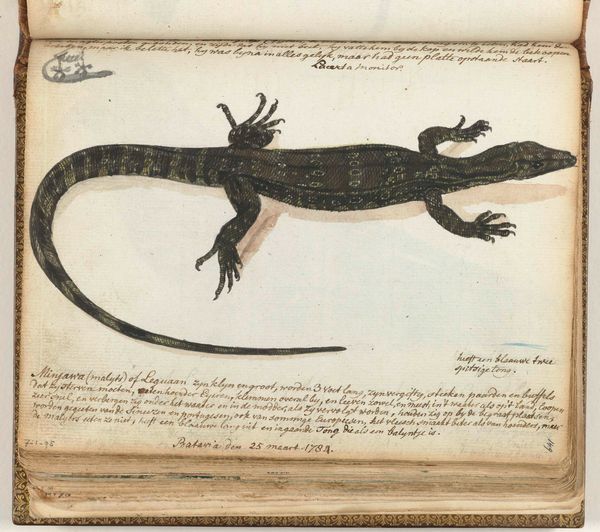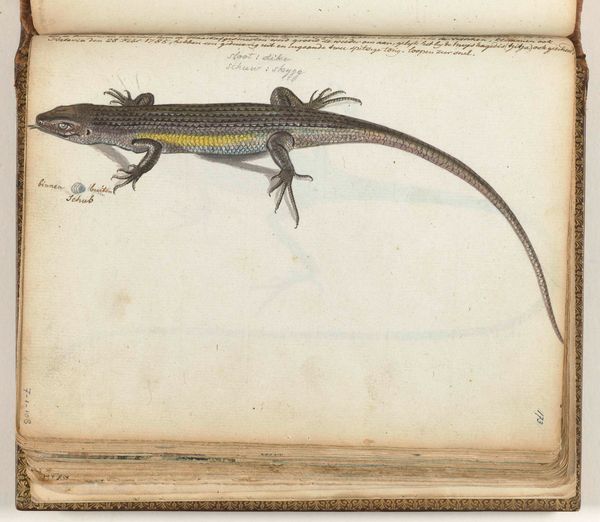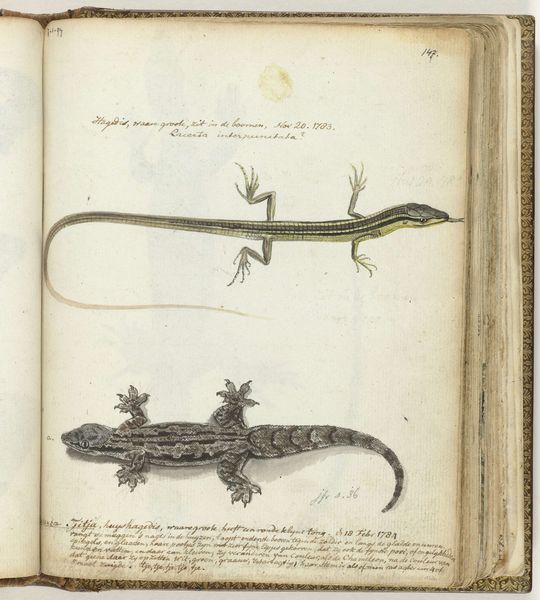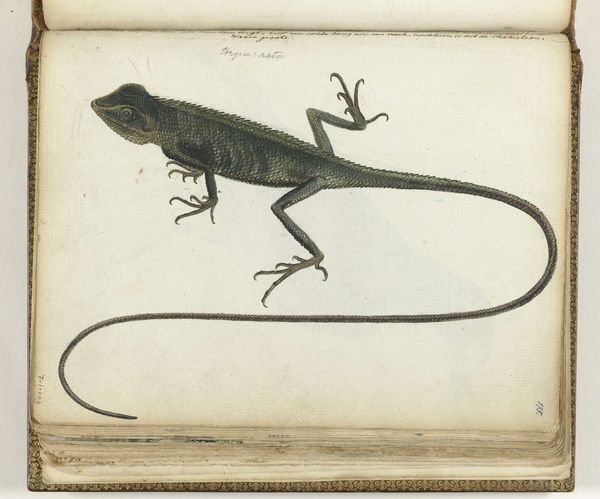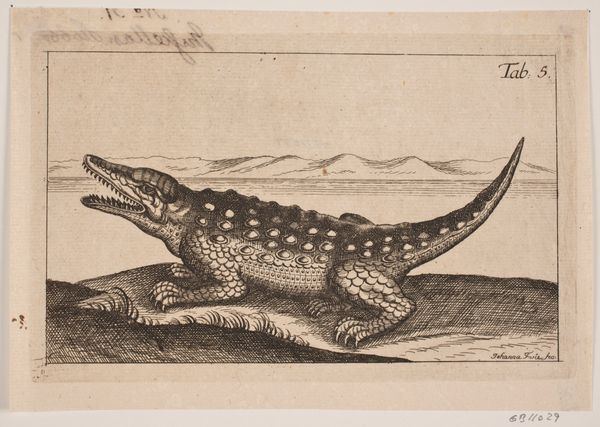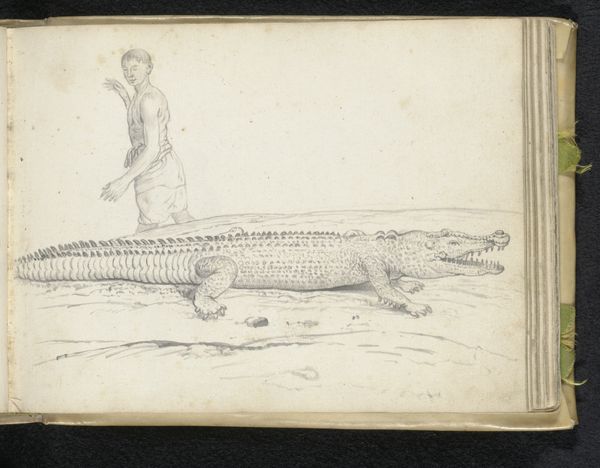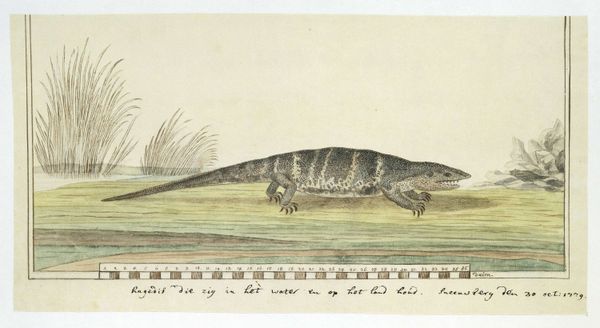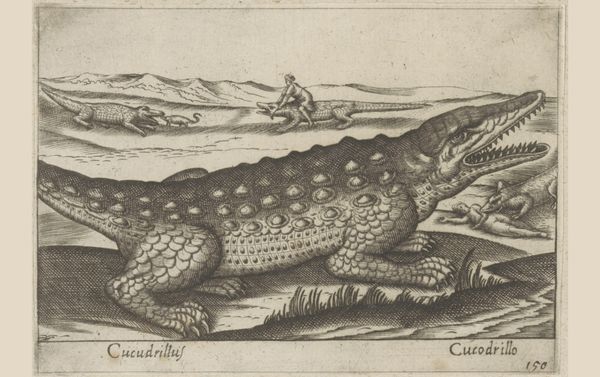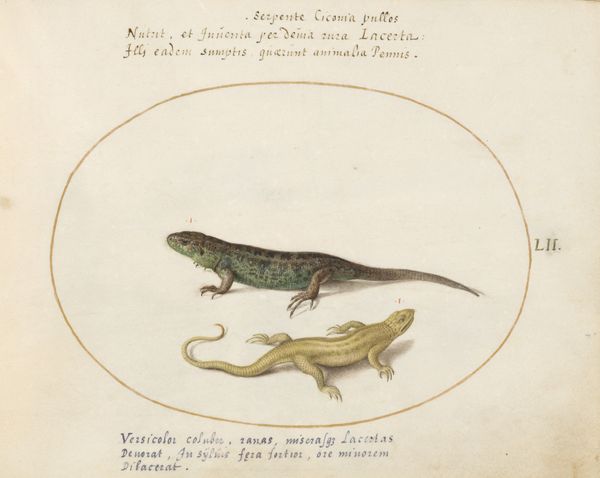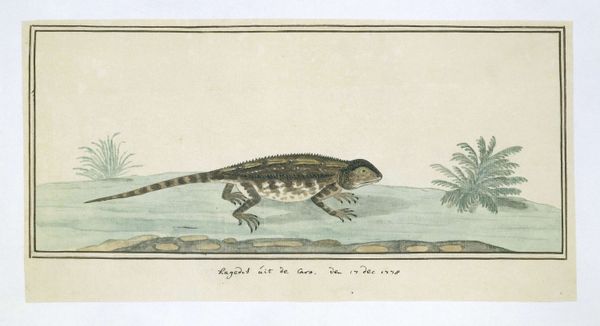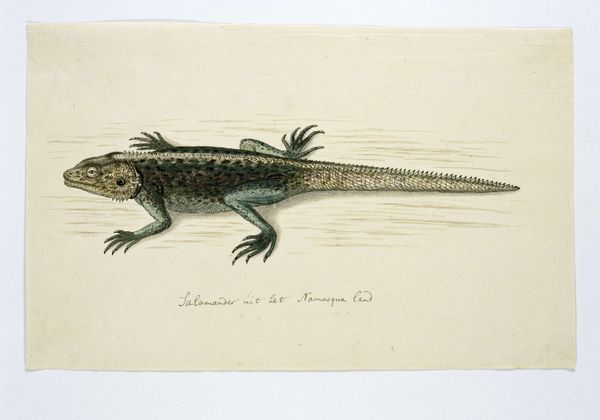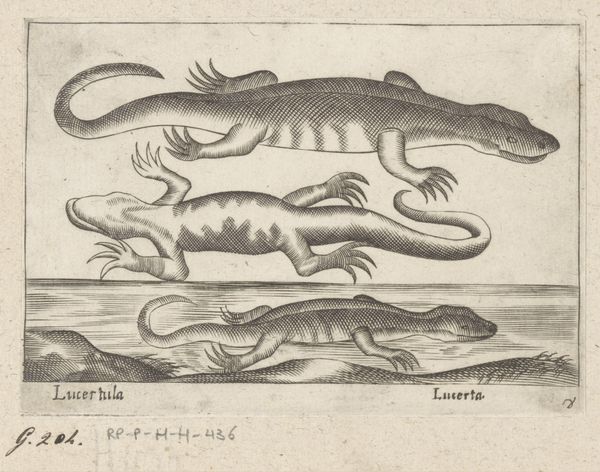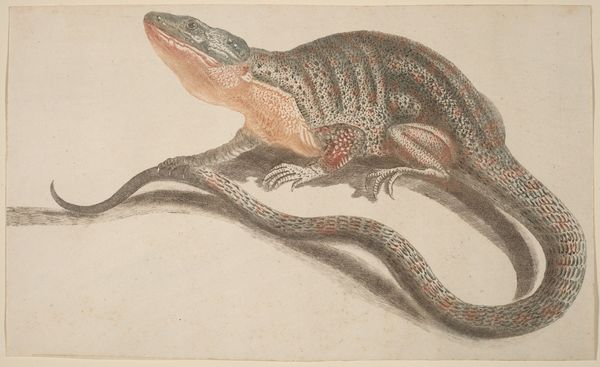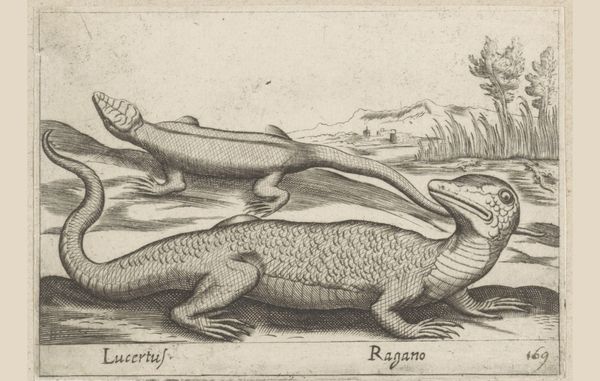
drawing, painting, paper, watercolor
#
drawing
#
animal
#
painting
#
figuration
#
paper
#
watercolor
#
coloured pencil
#
naturalism
#
realism
Dimensions: height 155 mm, width 195 mm
Copyright: Rijks Museum: Open Domain
Curator: This watercolor painting, possibly from 1784, is titled "Tokeh." It's attributed to Jan Brandes, and it features a beautifully rendered gecko. Editor: Immediately striking. It’s the meticulous detail, isn’t it? That incredibly fine rendering evokes a certain clinical detachment, despite the subject being a living creature. There is something both compelling and unsettling. Curator: Brandes really captures the texture and subtle gradations in the lizard's skin. It’s almost photographic in its realism, especially the rendering of those fascinating toe pads. What do you make of that precision, that urge for accuracy? Editor: This piece lives at the intersection of scientific documentation and colonial observation. Remember that Brandes worked for the Dutch East India Company. This wasn't just a picture of a lizard; it was data. A way of categorizing, understanding, and ultimately, controlling the natural world that they were exploiting. Curator: That's a fascinating perspective. I was seeing more of a naturalist’s sensibility— a curiosity, an attempt to document the world in its variety. Maybe there's a bit of both? There is clearly admiration for the subject’s natural camouflage. Editor: Of course, these early explorations of the natural world occurred against a backdrop of systemic violence and oppression. I can't help but see that context reflected, however subtly, even in this seemingly benign image. But at least Brandes gives the Tokeh a stage, in a moment of prominence. I'd also wager this wasn't only to colonize the landscape but the page too; as naturalism as realism often flattens things it studies so clinically. Curator: It gives you a lot to consider, doesn’t it? This little lizard, captured so precisely, now embodying this nexus of art, science, and history. Editor: Precisely, reminding us that even the most beautiful images can hold complex and sometimes uncomfortable truths.
Comments
No comments
Be the first to comment and join the conversation on the ultimate creative platform.
